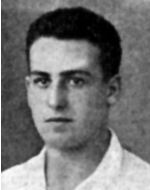Shkolnik, Jacob
Son of Zahava and Mordechai, was born on March 9, 1929, in Buenos Aires, capital of Argentina. In September 1934, when he was six years old, his parents immigrated to Israel and settled in Nesher, near Haifa, where he attended kindergarten and completed elementary school. Even in his youth, he discovered special talents in literature and art. After elementary school, he moved to the vocational school named after Titz Yagur. His teachers and teachers noted his diligence in theoretical studies and his accuracy in practical work. At the same time, he studied painting in a studio in Haifa and aspired to study at art centers in Europe when the time came. When he was about 15 he joined the Gadna and was an active member of the Haganah, and his commandant writes: “He was among the most dedicated and meticulous in all the activities of the Gadna and fulfilled his duties in silence, punctuality and devotion, Guarding, night patrols, etc. ” Was filled with the spirit of the “Jewish Resistance Movement” in which the three underground movements – the Hagana, the Irgun and the Lehi – united for joint action against the British. During the period of searching for weapons that the British conducted in kibbutzim throughout the country, he demanded and demanded increased activity. In this service he showed initiative and devotion and in a short time was appointed Deputy Commander of the Notrim Station in Kfar Maccabee, where he guided and trained many groups of members of the Haganah. At the beginning of the War of Independence, he was arrested by a British guard for transporting illegal weapons, dressed in a police uniform, and after his discharge he was immediately enlisted in the army and attached to one of the Carmeli Brigade battalions. He participated in many battles in Halissa, Balad al-Sheikh, Sasa and Haifa. Yaakov was sent to a squad commanders’ course, but returned to Haifa after his fierce battle with the help of his comrades, who was severely assaulted by the Kaukji forces. The house was damaged in the spine and after four days of suffering, which he carried with a smile so as not to worry his family standing by his bed, he died of his wounds on April 26, 1948. He was brought to eternal rest in the Kfar Hasidim cemetery.
